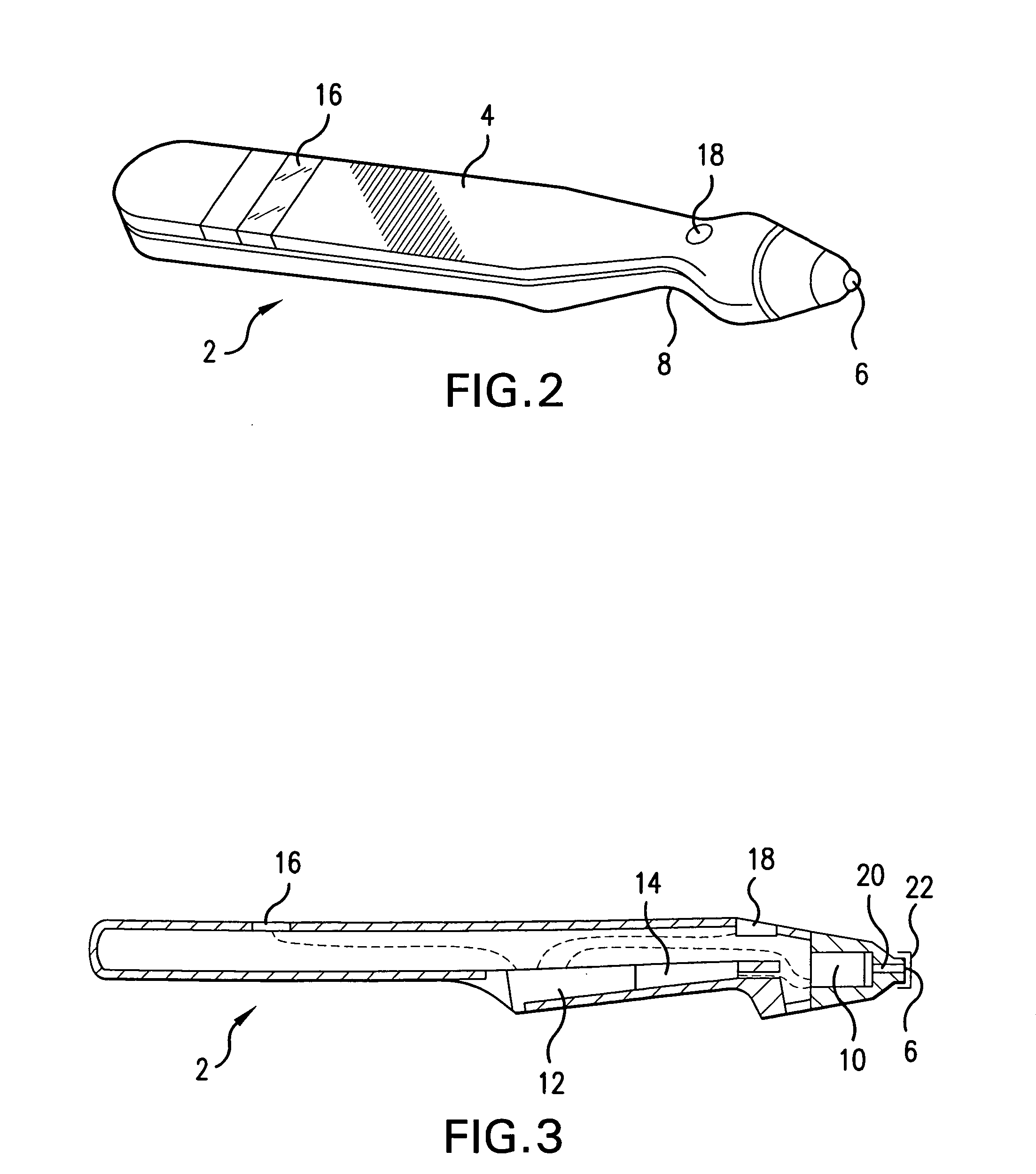Contact tonometer using MEMS technology
a technology of contact tonometer and mems, which is applied in the field of microelectromechanical systems, can solve the problems of deteriorating into total blindness of patients, difficult to imagine how difficult and lonely it would be, and elevated eye pressure damage the optic nerv
- Summary
- Abstract
- Description
- Claims
- Application Information
AI Technical Summary
Benefits of technology
Problems solved by technology
Method used
Image
Examples
Embodiment Construction
[0074] As shown schematically in FIG. 1, contact tonometer 2 according to the invention includes a housing 4 having a distal or contact end 6 and, in a preferred embodiment, a gripping portion 8 proximal to the contact end 6. The contact tonometer 2 includes a MEMS device 10 acting as a transducer to measure the force applied by the contact end 6 to the patient's cornea and to produce an electrical signal representative thereof. The contact tonometer 2 includes electronics and / or microprocessor (“electronics”) 12, a source of power 14 and a display 16. In the preferred embodiment, the electronics 12, source of power 14 and display 16 are integral parts of the housing 4. However, in another embodiment, they may be separate from housing 4.
[0075] Electronics 12 processes electrical signals from the MEMS device 10 and supplies a signal to display 16 causing display 16 to display information representative of the determined IOP. The source of power 14 is connected to the electronics 12 ...
PUM
 Login to View More
Login to View More Abstract
Description
Claims
Application Information
 Login to View More
Login to View More - R&D
- Intellectual Property
- Life Sciences
- Materials
- Tech Scout
- Unparalleled Data Quality
- Higher Quality Content
- 60% Fewer Hallucinations
Browse by: Latest US Patents, China's latest patents, Technical Efficacy Thesaurus, Application Domain, Technology Topic, Popular Technical Reports.
© 2025 PatSnap. All rights reserved.Legal|Privacy policy|Modern Slavery Act Transparency Statement|Sitemap|About US| Contact US: help@patsnap.com



